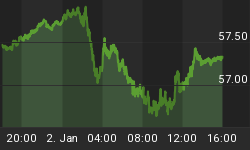When one side of any market gets crowded, it is time to prepare for a possible reversal. While there are numerous reasons to be bearish on the U.S. dollar long-term, there are some short-to-intermediate-term factors that may cause the dollar to stage a counter-trend rally in the coming weeks. As we monitor the dollar, we must also consider the possible impact on "weak dollar assets" such as gold (GLD), silver (SLV), copper (JJC), oil (USO), agricultural commodities (DBA), Australian dollar (FXA), Canadian dollar (FXC), and emerging markets (EEM).
Investor sentiment, which can be used as a contrary indicator at extremes, is telling us to keep an open mind about the dollar as the next Fed meeting draws closer. According to Bloomberg:
Commodity Futures Trading Commission data show hedge funds and other large speculators are more bearish on the dollar than at any time in history, with bets on a decline exceeding those on a rise by 341,683 contracts as of Oct. 5. The last two times sentiment was close to this level, in early 2008 and late 2009, the dollar rallied. The Dollar Index, which tracks the greenback against the euro, yen, pound, Canadian dollar, Swiss franc and Swedish krona, surged as much as 24 percent in the second half of 2008 and 19.6 percent between November 2009 and June 2010. (Full Story).
The Fed's strong hints at quantitative easing have helped propel the dollar lower in recent weeks. The details on any new quantitative easing programs will be announced on November 3, 2010. We need to prepare for a possible "sell the rumor, buy the news" scenario, especially if the Fed's announcement fails to meet the market's high expectations relative to dollar amount of bonds to be purchased by the Fed.
On a monthly chart going back to 1999, 75.10 and 72.62 represent logical areas to monitor closely relative to a possible reversal. Other levels to watch include 75.89, 74.27, 73.20, 72.46, and 70.70. Additional charts showing trends and levels to watch in the U.S. Dollar Index can be found in Weak Dollar Good for Stocks.

















